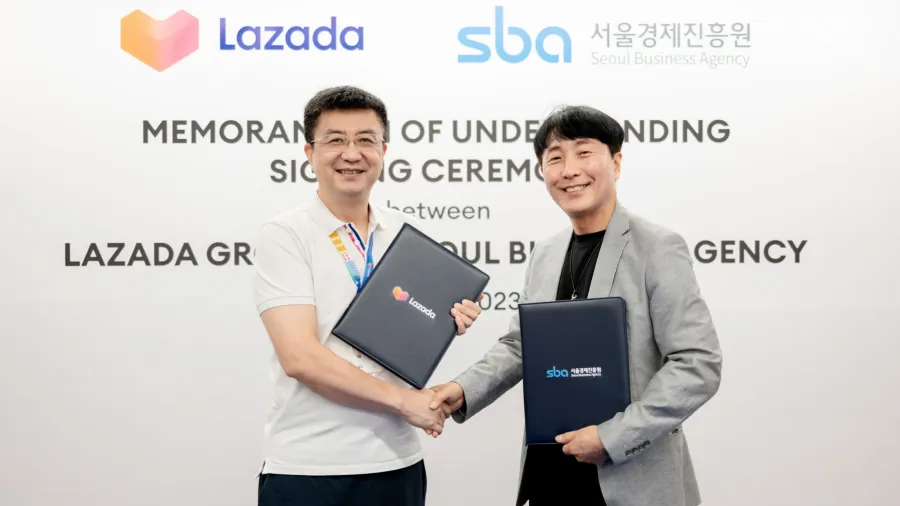The e commerce sector in Southeast Asia is entering a new phase as competition intensifies and cross border collaboration becomes more strategic. One of the most significant moves in recent months is the Lazada Gmarket Partnership, which connects one of Southeast Asia’s most dominant online marketplaces with a leading South Korean retail platform. This partnership is set to reshape the flow of digital trade between South Korea and Southeast Asia while offering consumers greater access to popular fashion and lifestyle products.
Lazada, backed by Alibaba, already has operational reach in Indonesia, Malaysia, Thailand, Vietnam, the Philippines and Singapore. By teaming up with Gmarket, a key player in South Korea’s online retail landscape under the eBay Korea group, the company is unlocking new supply sources and brand partnerships. On the other side, Gmarket gains access to millions of Southeast Asian consumers who have shown growing interest in Korean beauty products, fashion items and lifestyle accessories.
The Lazada Gmarket Partnership signals a shift in strategy. Instead of competing solely on logistics and discounts, e commerce platforms are now investing in exclusive access to authentic branded goods. This not only helps to prevent counterfeit issues but also enhances consumer trust through verified sellers and unified customer service.
Why South Korean Brands Are In High Demand Across Southeast Asia
The influence of Korean culture in Southeast Asia is undeniable. From music and television dramas to beauty standards and clothing trends, K culture dominates social media feeds across the region. Consumers no longer view Korean brands as aspirational. They see them as essential lifestyle choices.
For example, Korean skincare routines are popular among young buyers in Indonesia and the Philippines. Meanwhile, fashion brands worn by idols in K pop groups often sell out within minutes when they appear on Asian marketplaces. The Lazada Gmarket Partnership gives these buyers a direct channel to source products with guaranteed authenticity and faster delivery times.
Previously, many Southeast Asian consumers relied on unofficial resellers or social media based personal shoppers. While these alternatives provided access, they often lacked reliable pricing and authenticity assurance. With Gmarket officially integrated into Lazada’s ecosystem, both platforms can coordinate inventory, payments and after sales service. This brings structure to what was previously a fragmented import process.
How The Partnership Boosts Cross Border Logistics And Local Sellers
The success of the Lazada Gmarket Partnership does not rely solely on consumer demand. It also depends on strong logistics infrastructure. Fortunately, both companies already have extensive networks. Lazada invests heavily in regional warehousing, last mile delivery operations and digital payment integration. Gmarket brings in export ready merchants who are familiar with international packaging, documentation and customs compliance.
Through this collaboration, Korean sellers can list products directly to Southeast Asian storefronts without needing to understand each country’s regulations. Lazada acts as a single access point, handling localization such as currency conversion, language translation and promotional campaigns. This simplifies market entry while keeping operational costs manageable.
Local sellers in Southeast Asia can also benefit. As part of the partnership, some Lazada merchants may be able to distribute their products via Gmarket to South Korean consumers. This opens new revenue channels for regional brands in sectors such as modest fashion, artisanal crafts or halal certified goods. The relationship becomes a two way trade bridge rather than a one sided import flow.
What This Means For The Future Of Digital Retail Competition
The rise of cross border alliances suggests that e commerce competition is no longer based purely on domestic performance. Instead, platforms must leverage global supply chains and cultural trends to stay relevant. The Lazada Gmarket Partnership is likely to inspire similar collaborations in the future.
Other Southeast Asian players like Shopee or Tokopedia may consider alliances with Japanese, Chinese or even Middle Eastern marketplaces to secure exclusive brand sources. At the same time, major Korean platforms like Coupang might explore their own expansion routes.
For consumers, this ongoing evolution leads to more affordable options, faster delivery times and better access to niche products that previously required overseas shipping fees. Loyalty may increasingly depend on variety and convenience rather than discount codes alone.
From a broader perspective, the collaboration strengthens regional connectivity. When digital platforms align, they bring manufacturers, logistics providers, payment processors and marketing agencies together. This deep integration accelerates digital transformation across multiple layers of the economy.
A Win For Both Retailers And Consumers
As online retail matures, platforms must innovate beyond traditional promotional campaigns. Strategic partnerships like the Lazada Gmarket Partnership offer long term value because they create structural advantages instead of temporary boosts. Brands gain legitimacy. Sellers reach new customers. Consumers enjoy safer and more reliable transactions.
Looking ahead, the success of this collaboration will depend on execution. Inventory management, localized marketing and customer support must operate smoothly across all markets. If done right, this model may become the blueprint for future cross border digital commerce arrangements.
For now, Southeast Asia stands to gain from an influx of trendsetting Korean products. Meanwhile, South Korean sellers get access to one of the fastest growing consumer bases in the world. It is a mutually beneficial exchange built on technology, culture and market trust.
The Lazada Gmarket Partnership is more than a business announcement. It represents a shift in how digital marketplaces view expansion. Instead of going alone, they are choosing to grow together.
Read More






 Saturday, 15-11-25
Saturday, 15-11-25







